Truth does not need promotion; time will prove everything.
Author: David, Deep Tide TechFlow
On August 28, 2014, a man named Hal Finney passed away.
Subsequently, his body was sent to a cryonics facility in Arizona, USA. There, the body was preserved in liquid nitrogen, waiting for the day when future medicine could "revive" the deceased.
Exactly 11 years have passed, but most people seem to have never heard of Hal Finney.
In the crypto world, he may be one of the most important figures in Bitcoin's history:
Finney was the first user of the entire Bitcoin network, aside from the founder Satoshi Nakamoto.
On January 3, 2009, a mysterious figure using the pseudonym "Satoshi Nakamoto" created Bitcoin. Nine days later, Satoshi sent Finney 10 bitcoins, marking the first transaction in Bitcoin's history. At that time, the entire network consisted of just two people: Satoshi and Finney.
Today, Bitcoin's market value exceeds one trillion dollars. But in the beginning, this world-changing financial system was merely an experiment in transferring funds between two individuals.
In 2009, 53-year-old Finney saw the Bitcoin white paper published by Satoshi and immediately recognized its revolutionary potential.
He downloaded and ran the Bitcoin software, helping Satoshi fix bugs in the early code. Finney played a crucial role in ensuring Bitcoin's survival and development to this day.
However, in the same year that Bitcoin was born, Finney was diagnosed with amyotrophic lateral sclerosis (ALS).
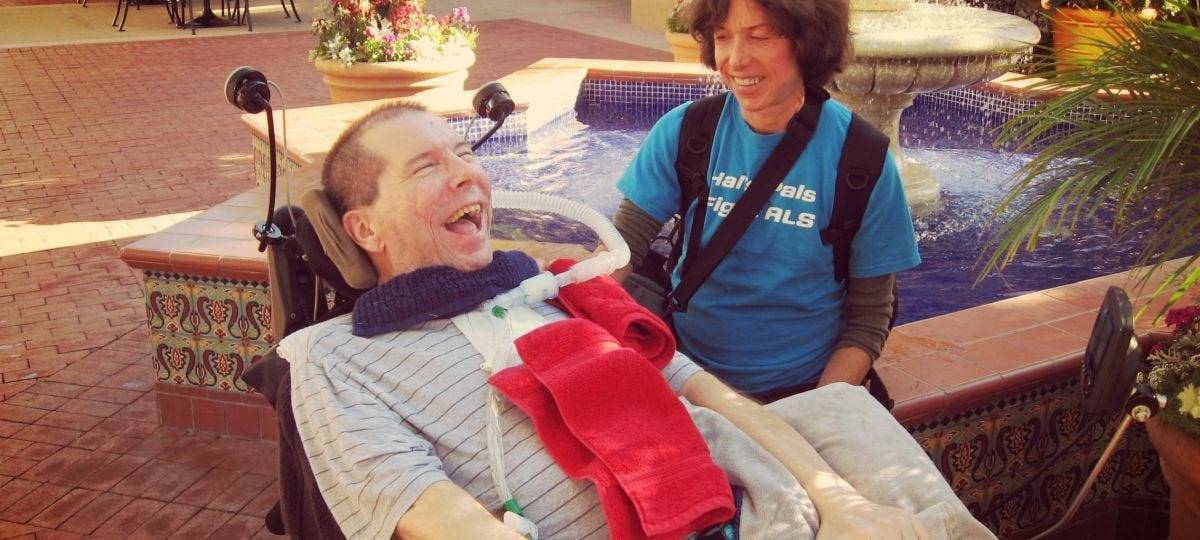
This disease gradually causes loss of muscle control, ultimately leading to full-body paralysis. Five years later, he passed away. He chose cryonics, hoping that future medicine could bring him back to life.
One of the ways to pay for the cryonics was through Bitcoin.
Today, on the 11th anniversary of Finney's death, it seems that people have not truly forgotten this Bitcoin pioneer.
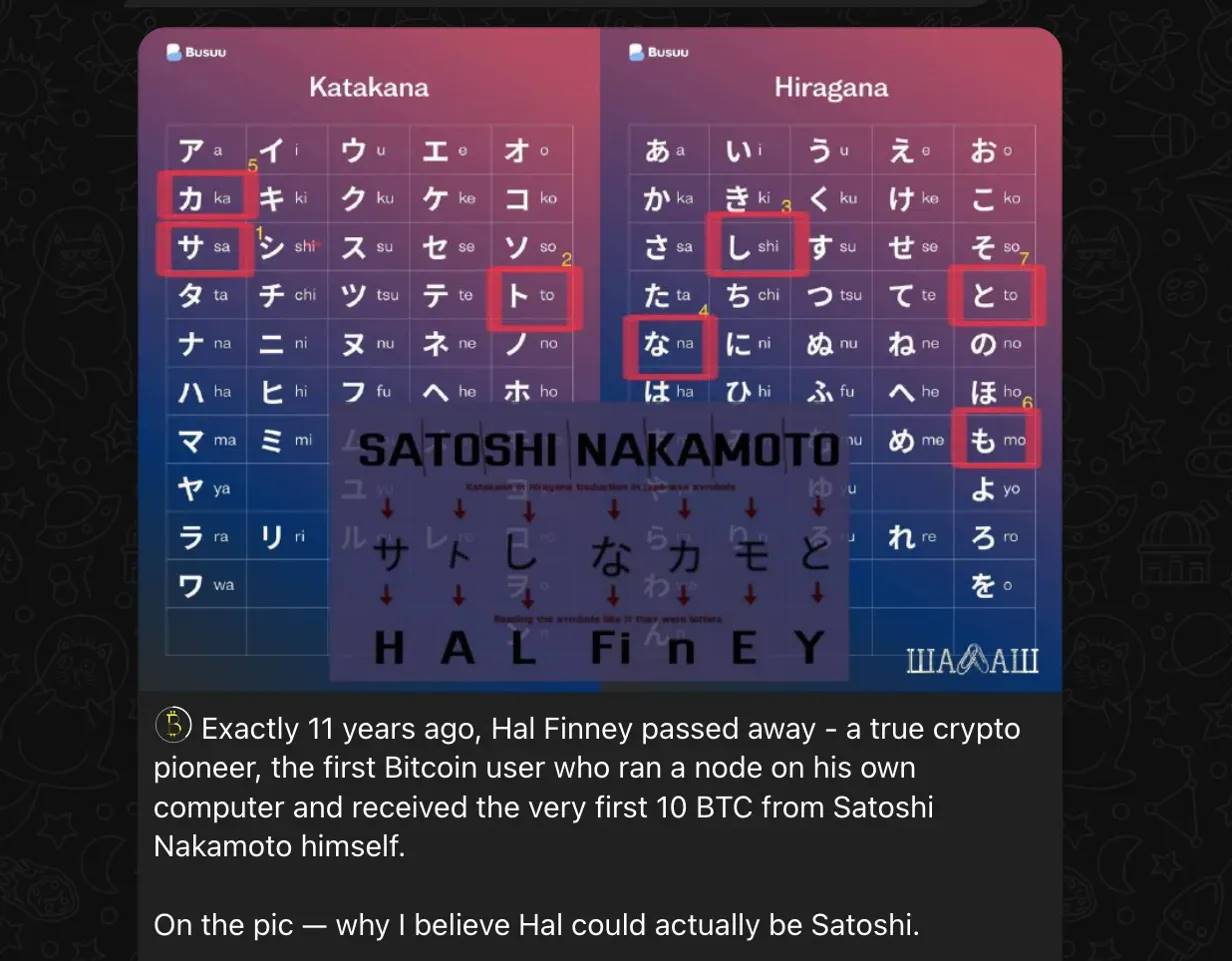
Someone posted an image of a Japanese kana chart on social media, using Satoshi's name as a starting point. They suggested that the subtle coincidences in the shapes and arrangements of the characters pointed to Hal Finney's English name.
This wordplay can easily be seen as overinterpretation.
But interestingly, Finney was also a cryptographer who spent his life researching how to hide and encode information.
For him, embedding his real name within the pseudonym Satoshi Nakamoto would seem like an easily achievable intellectual game, a form of cryptopunk expression.
However, Finney denied being Satoshi during his lifetime.
In 2013, almost completely paralyzed, he wrote on a forum: "I am not Satoshi Nakamoto." He also publicly shared his email correspondence with Satoshi, demonstrating two distinct personalities and writing styles.
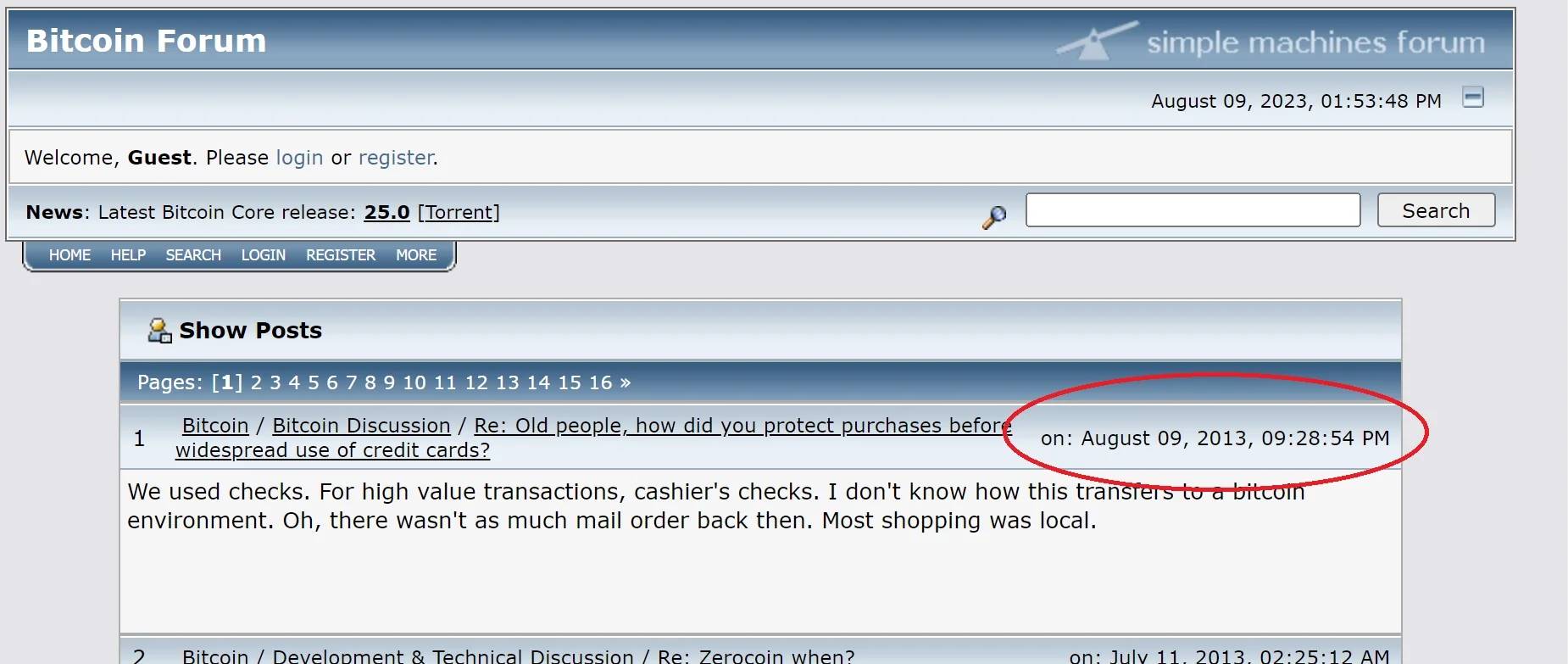
But after 2014, Satoshi gradually stopped posting on forums, and a year later, Finney's body was also frozen in liquid nitrogen.
The Neighbor of the False Satoshi
The discussion about "Finney possibly being Satoshi" also stems from some other noteworthy coincidences.
In March 2014, Newsweek published a report claiming to have found Satoshi Nakamoto. The journalist tracked down a Japanese-American man in Temple City, California, whose real name was Dorian Satoshi Nakamoto. After the article was published, media from around the world flocked to this quiet little town.
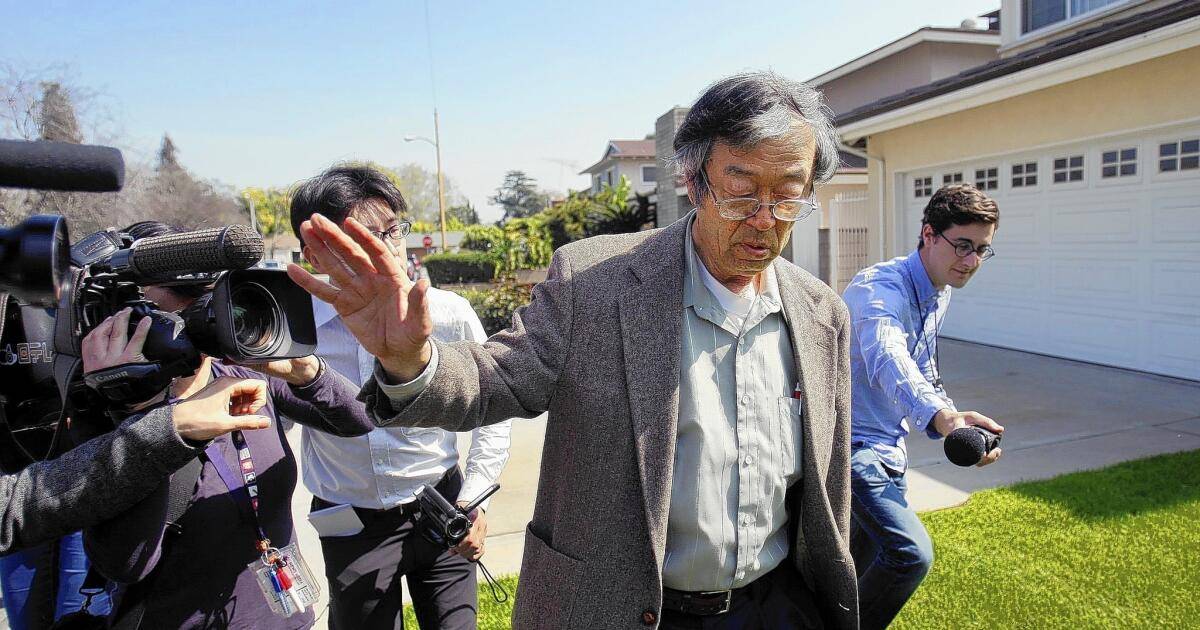
However, this was later proven to be a mistake. Dorian was an unemployed engineer who knew nothing about Bitcoin. Satoshi himself, after seeing the report, made a rare return to the Bitcoin forum after a long absence to state:
"I am not Dorian Nakamoto."
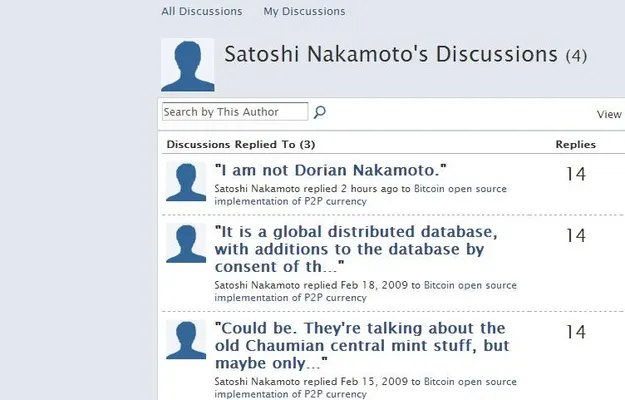
Interestingly, Hal Finney also lived in Temple City. He had lived there for 10 years, just a few blocks away from Dorian, who was being pursued by the media.
This geographical coincidence sparked speculation: Could Finney have borrowed his neighbor's name as a pseudonym?
The Japanese name Satoshi Nakamoto indeed fits the mysterious persona Satoshi wanted to create. Of course, this could also be purely coincidental. However, Finney and Satoshi did have some overlap in their timelines.
Excluding the sudden response in 2014 denying he was Dorian, Satoshi's last public appearance on the forum was in April 2011. He wrote in an email:
"I have moved on to other things." After that, he completely disappeared and never used the millions of bitcoins in his wallet again.
Finney was diagnosed with ALS in August 2009. The progression of the disease is gradual, starting with the fingers, then the arms, followed by the legs, and finally the entire body.
By the end of 2010, Finney's health had noticeably deteriorated. Satoshi's withdrawal coincided with Finney's worsening condition; however, whether there is a connection remains unknown.
What is even more thought-provoking is that Finney created a system called RPOW in 2004. The core problem this system addressed was the key issue that Bitcoin would later solve:
How to prevent double spending of digital currency without a central authority.
The History of Cryptography OGs
OG stands for original gangster, which roughly translates to "old hand" or veteran.
In the crypto industry, OG is used to refer to those who entered the space early, achieved significant results, and made substantial contributions. But true OGs never refer to themselves as OGs.
If we consider the creation of Bitcoin in 2008, there were no more than a few hundred people in the world capable of doing so. Hal Finney was likely one of them, a true cryptography OG.
This is not an exaggeration. The creation of Bitcoin required a rare combination of:
Top-notch cryptographic skills, a deep understanding of distributed systems, familiarity with the history of digital currency, and a steadfast belief in creating currency free from government control.
Finney's story began in the early 1990s. At that time, the U.S. government classified strong encryption technology as munitions and banned its export. A group of hackers calling themselves "cypherpunks" believed that privacy was a fundamental human right and decided to fight regulation with code.
In this context, Phil Zimmermann created PGP (Pretty Good Privacy), software that allowed ordinary people to use military-grade encryption. In 1991, Zimmermann released the source code of PGP for free on the internet, causing a huge uproar.
Finney was the second programmer recruited by Zimmermann. At that time, PGP was still a rough prototype, and Finney's task was to rewrite the core encryption algorithm to make it faster and more secure.
Finney spent several months rewriting the entire encryption engine, significantly improving the speed of PGP 2.0.
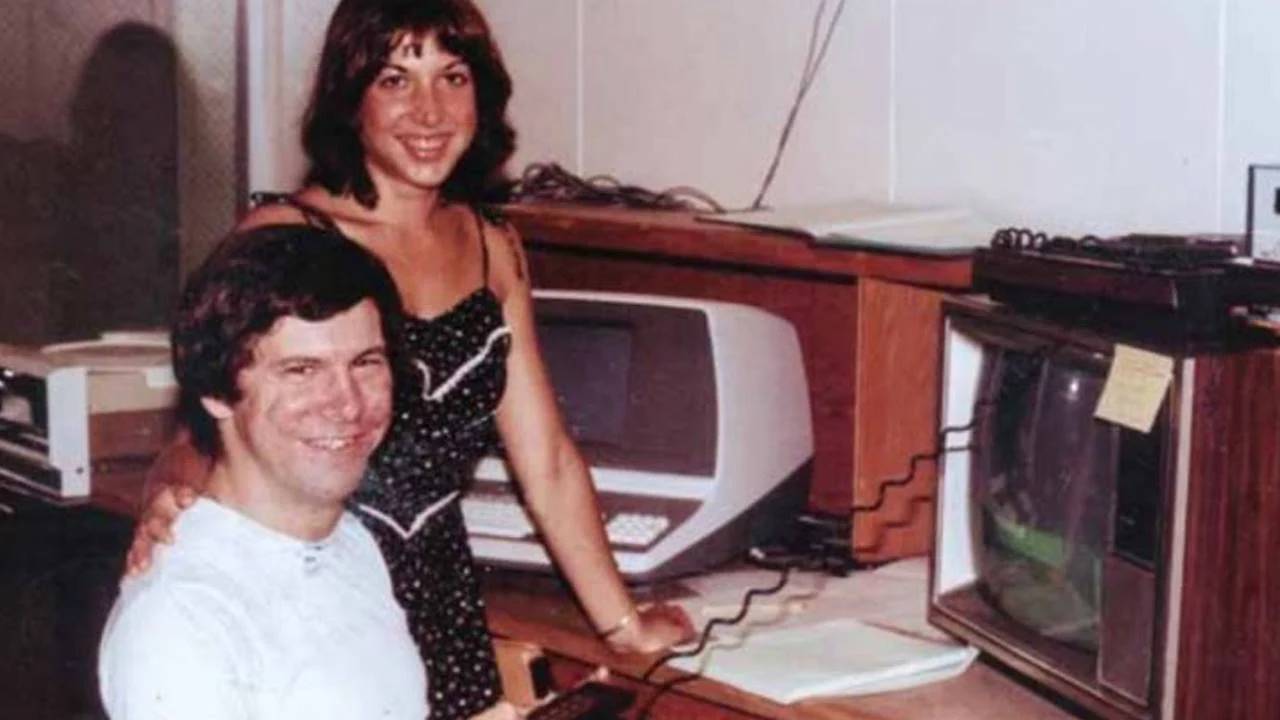
This experience made Finney a central figure in the cypherpunk movement.
At that time, the prevailing view among cypherpunks was that cryptography could reshape the social power structure and return privacy rights to individuals. They communicated ideas through a mailing list, discussing topics ranging from anonymous communication to digital cash.
Finney not only participated in discussions but also operated two anonymous email relays, allowing people to send messages while hiding their identities. In this community, the dream of creating a government-independent digital currency was a recurring theme.
In 2004, Finney proposed his own solution: RPOW (Reusable Proof of Work).
His proposal was as follows: users generate a proof of work by consuming computational power and send it to the RPOW server. After verification, instead of simply marking it as "used," the server generates a new, equivalent RPOW token to return to the user. The user can then transfer this token to someone else, who can exchange it for new tokens at the server.
Does this not resemble the proof of work used in Bitcoin?
However, RPOW ultimately did not gain widespread adoption, but it proved one thing: digital scarcity can be created. You can create non-fungible, transferable digital tokens using computational power.
Four years later, on October 31, 2008, a person signing as Satoshi Nakamoto published the Bitcoin white paper in the same cypherpunk mailing list. Finney immediately recognized what this meant.
"Bitcoin seems like a very promising idea," he replied to Satoshi's post.
Bitcoin solved the last problem that RPOW did not address: complete decentralization. No servers are needed, and no one needs to be trusted; the entire network collectively maintains a ledger.
On January 3, 2009, the Bitcoin genesis block was born. Finney downloaded the software and became the first person to run a full node, aside from Satoshi.
In the following days, the entire Bitcoin network consisted of just the two of them. Finney later recalled, "I exchanged a few emails with Satoshi, mainly reporting bugs, and he fixed them."
On January 12, Satoshi sent Finney 10 bitcoins, marking the first transaction in Bitcoin's history.
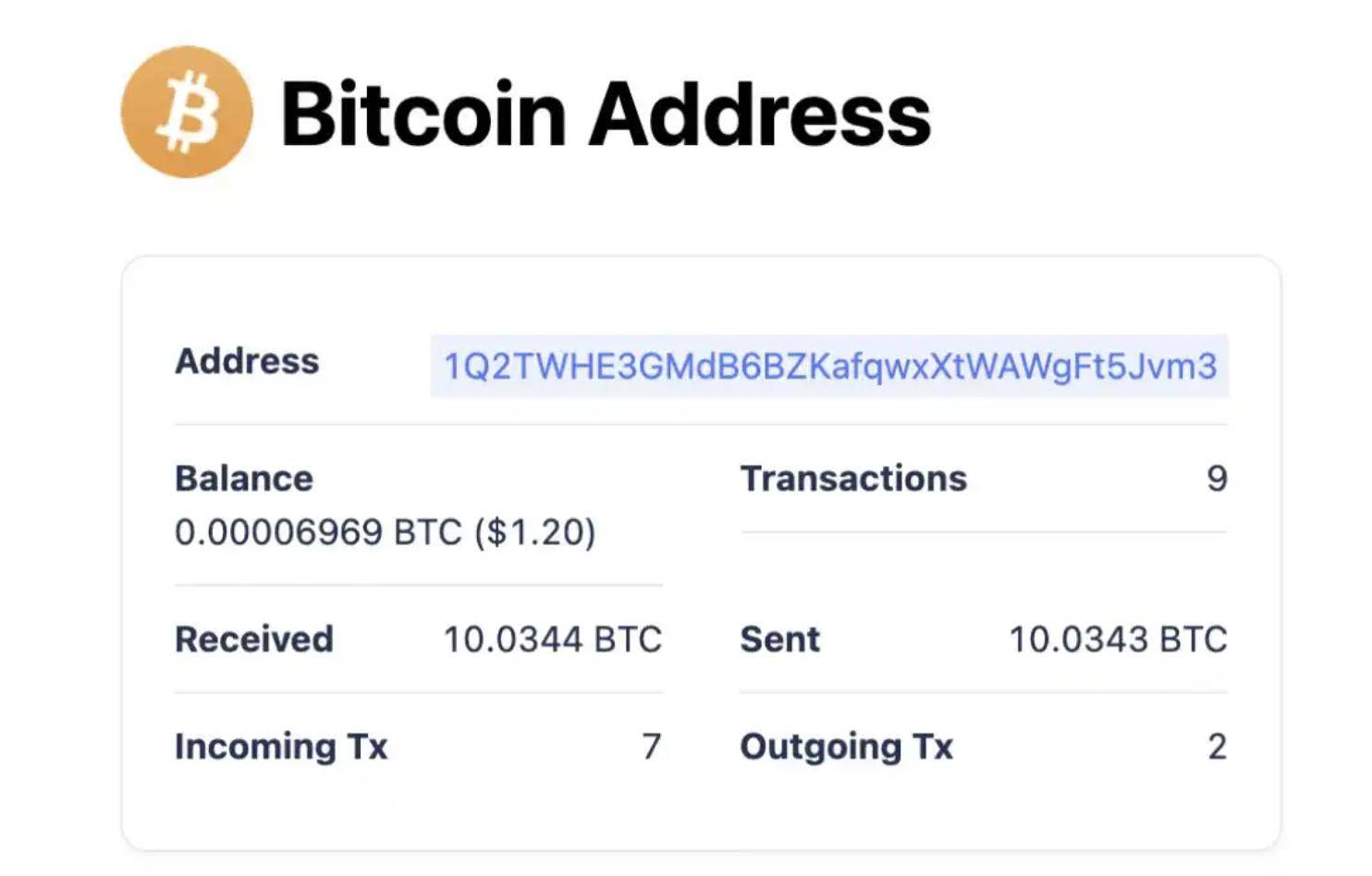
Unfortunately, just a few months after helping Bitcoin get started, Finney was diagnosed with ALS. As his condition progressed, his activity gradually decreased. Meanwhile, Satoshi also began to fade away after 2010, ultimately disappearing completely in 2011.
Two trajectories, two figures, intersecting at the critical moment of Bitcoin's birth, then each heading towards different outcomes. One disappears into the depths of the internet, while the other ultimately has his body frozen in liquid nitrogen. The true relationship between them may forever remain a mystery.
When the Crypto Stars Shone
From RPOW to Bitcoin's POW, the technological lineage is clearly visible. Speculating whether Finney is Satoshi Nakamoto holds little significance; it feels more like a topic for casual conversation.
But perhaps what deserves to be remembered more is that over a decade ago, these two early forum users, Satoshi and Finney, communicated and supported each other, repeatedly testing an obscure cypherpunk experiment until it went live.
There were no witnesses, no applause, just two computers quietly running in some corner of the internet.
They could not have anticipated that this seemingly geeky "peer-to-peer electronic cash system" would, years later, usher in an era of cryptocurrency, achieving a trillion-dollar market; nor could they have foreseen that central banks around the world would study it seriously, Wall Street would embrace it, and that it would be named in the financial revolution.
More importantly, the Bitcoin that these cryptographic pioneers jointly created continues to correct, change, and influence the perspectives and investment choices of many.
Finney once said something during a discussion about digital cash that still resonates today:
"Computer technology can be used to liberate and protect people, not to control them."

This statement was made in 1992, 17 years before Bitcoin. Yet it accurately predicted the dilemmas we face today and the answers Bitcoin attempts to provide.
As for Satoshi, the identity of whom remains a mystery to this day, he left behind a phrase that future generations would remember and admire:
"If you don't believe me, I'm sorry, I don't have time to convince you."
This phrase later became a spiritual totem for the crypto community. It represents an attitude: Truth does not need promotion; time will prove everything.
On August 28, 2014, Hal Finney passed away. His last programming project was software to enhance the security of Bitcoin wallets. Even when completely paralyzed and only able to operate a computer through an eye tracker, he continued to contribute code to the system he helped bring to life.
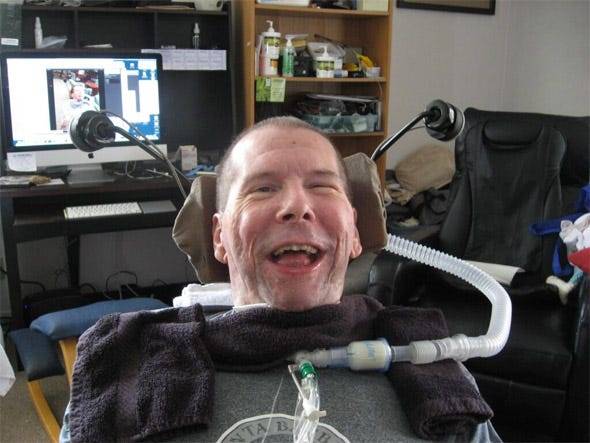
Satoshi has not appeared since 2011. His one million bitcoins remain untouched, like a digital monument reminding people of the system's origins. Some say this is the ultimate "proof of burn"; the founder, by never using his wealth, proves that he did not create Bitcoin for personal gain.
If one day in the future, medicine truly allows Finney to awaken, what would he think of today's crypto world? Would he feel proud of Bitcoin's success, or would he be disappointed by certain developments?
There are no answers to these questions.
But whether Hal Finney is Satoshi Nakamoto or not, he is an indispensable figure in Bitcoin's history. Without his participation, support, and contributions, Bitcoin might never have transformed from an idea into reality.
The moment when the stars shone has passed, but the light they left behind continues to illuminate the path ahead.
免责声明:本文章仅代表作者个人观点,不代表本平台的立场和观点。本文章仅供信息分享,不构成对任何人的任何投资建议。用户与作者之间的任何争议,与本平台无关。如网页中刊载的文章或图片涉及侵权,请提供相关的权利证明和身份证明发送邮件到support@aicoin.com,本平台相关工作人员将会进行核查。




